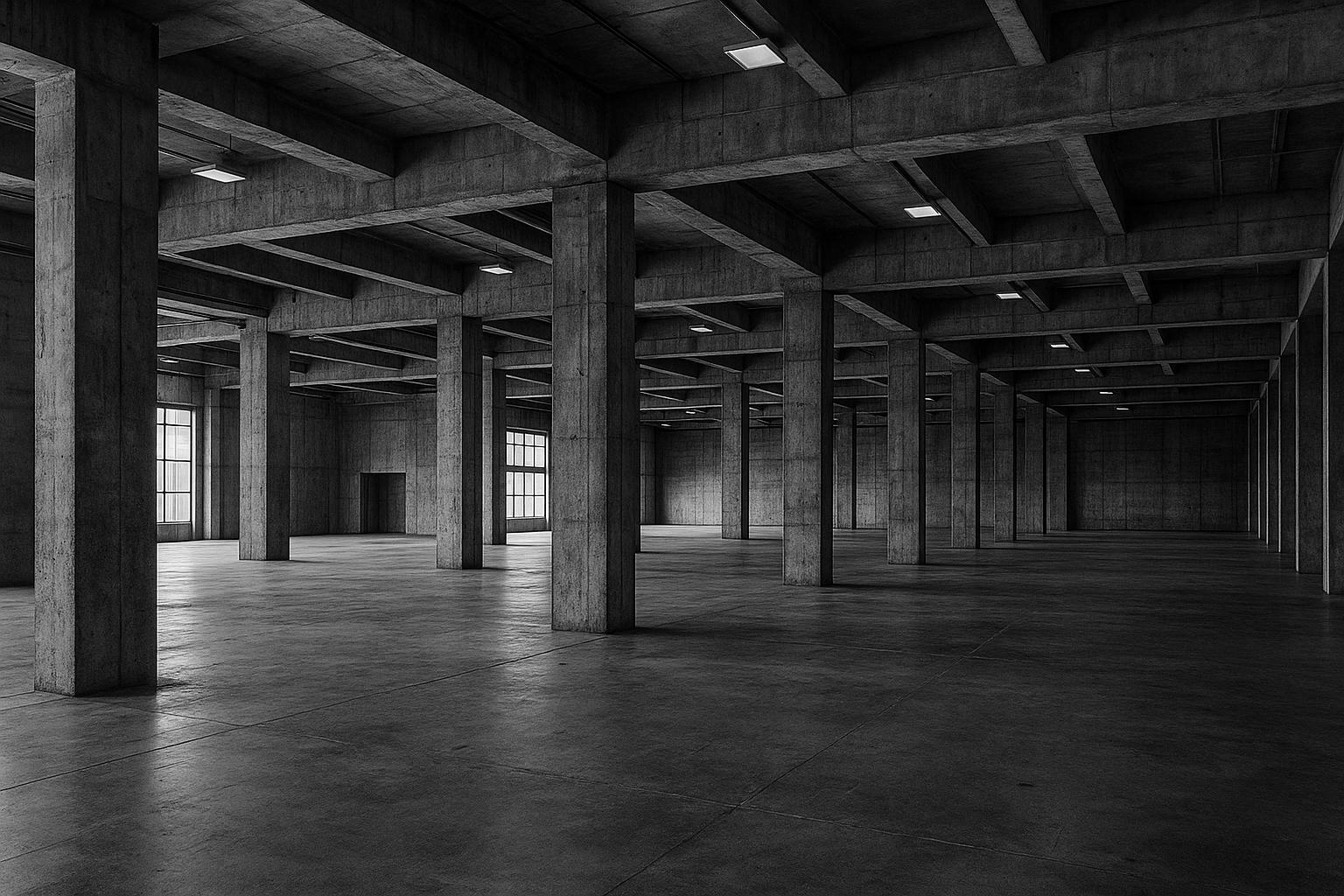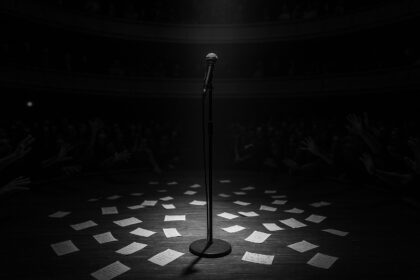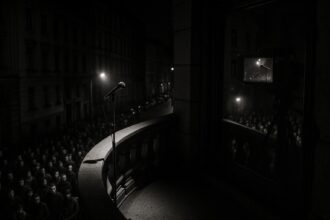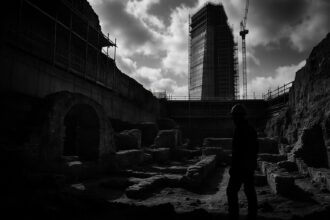As part of its £230 million overhaul, the Barbican Centre launches a call for innovative proposals to activate two unused exhibition halls, aiming to enhance public engagement, sustainability, and cultural value in London’s Square Mile.
The Barbican Centre, a landmark cultural complex in London, has initiated a call for expressions of interest to reimagine the future use of its two large exhibition halls, which have been largely unused since 2010. This move is part of the broader Barbican Renewal programme, a £230 million overhaul led by architects Allies and Morrison alongside Asif Khan Studio. The renewal scheme aims to restore and revitalise the entire site, ensuring it remains relevant and vibrant for future generations.
The two exhibition halls collectively cover around 9,500 square metres—the size of 36 tennis courts—across two levels and are strategically positioned between prominent neighbouring venues including the new London Museum and the Guildhall School of Music and Drama. Historically, these halls have served as key venues for conferences and commercial exhibitions but have since fallen dormant, presenting a significant opportunity for cultural and civic activation within London’s Square Mile.
Expressions of interest are being sought from organisations across creative, commercial, and civic sectors, with an emphasis on innovative proposals that deliver cultural or creative value, increase public engagement, generate income, and promote sustainability and inclusivity. The Barbican Centre encourages ideas that activate the spaces for both visitors and the local community, with flexibility offered for joint or separate uses, long-term visions, meanwhile uses, or partnership models.
This initiative follows recent stages in the Barbican Renewal project, which also includes refurbishment of the foyers, lakeside terrace, and conservatory. The Barbican Centre has faced significant deterioration since its opening in 1982 as part of the City’s post-war reconstruction, designed by Chamberlin, Powell and Bon. Prior upgrades have included a £12.6 million overhaul in 2006 by Allford Hall Monaghan Morris, the creation of a new street-level cinema complex, and an environmental upgrade of the main art gallery in 2019 by RUFFARCHITECTS.
The ongoing renewal process, fueled by a £191 million funding commitment from the City of London Corporation covering 80% of the first phase, seeks not only to restore the Barbican’s architectural and cultural significance but also to meet modern sustainability and accessibility standards. Allies and Morrison, Asif Khan Studio, and their collaborators—including Buro Happold engineers and heritage experts—emphasise sustainable and inclusive design principles while respecting the Barbican’s unique architectural heritage.
Construction on the first phase of the renewal, which includes the refurbishment of the foyers, lakeside, and conservatory, is expected to begin in 2027, aiming for completion in time for the Barbican’s 50th anniversary in 2032. The two exhibition halls are anticipated to be available for redevelopment from 2028 onwards.
Philippa Simpson, Director for Buildings and Renewal, highlighted the significance of the exhibition halls, saying, “Sitting at the heart of the cultural life of the City, the Barbican’s Exhibition Halls offer an unparalleled opportunity to shape the creative and commercial future of the Capital. We are excited to explore the possibilities for bringing these extraordinary spaces back to life, and to work in closer dialogue with neighbouring sites and venues to bring new audiences to the Square Mile.”
At this stage, no specific project commitments will be made, as the call for expressions of interest is designed to gather insights into appetite, feasibility, and partnership potential. This early market engagement is a key step in shaping the strategic planning and future procurement phases, which seek to transform the currently dormant halls into dynamic assets that broaden public engagement and support the cultural ecosystem of London.
 Reference Map:
Reference Map:
- Paragraph 1 – [1], [4]
- Paragraph 2 – [1]
- Paragraph 3 – [1], [2], [3]
- Paragraph 4 – [1], [4], [5]
- Paragraph 5 – [1], [3], [4], [5], [6]
- Paragraph 6 – [1], [6]
Source: Noah Wire Services
- https://www.architectsjournal.co.uk/competitions/barbican-exhibition-halls-london – Please view link – unable to able to access data
- https://www.bbc.com/news/articles/c4gk2dj4142o – The Barbican Centre in London has unveiled new design images as part of its plans to refurbish three of its well-known spaces—the conservatory, lakeside, and foyers. The proposed upgrades, which include a new water feature, form part of the Centre’s wider renewal programme, with construction expected to begin in 2027. The goal is to complete the works two years ahead of the Barbican’s 50th anniversary in 2030. The Grade-II listed cultural destination, which opened in 1982, acknowledged that the building had ‘deteriorated significantly’ over the years.
- https://www.barbican.org.uk/our-story/press-room/barbican-renewal-gathers-momentum-with-strong-public-backing-and-new-designs – The Barbican Centre’s renewal programme is gaining momentum with strong public support and new designs unveiled. The initiative aims to restore and revitalise the site, unlocking underused spaces for greater public, civic, and creative use, upgrading outdated building systems, and meeting net-zero targets. The proposed designs focus on inclusive, sustainable design principles and celebrate the Centre’s unique architectural heritage. The project is led by architects Allies and Morrison, working with Asif Khan Studio and engineers Buro Happold. The City of London Corporation has committed £191 million to fund 80% of this first phase of works, with construction expected to begin in 2027 and completion in time for the Barbican’s 50th anniversary in 2032.
- https://www.architectsjournal.co.uk/news/allies-and-morrison-and-asif-khan-get-cash-boost-for-barbican-revamp – The City of London Corporation has approved an allocation of £191 million for Allies and Morrison and Asif Khan Studio’s revamp of the Barbican Centre. The funding represents four-fifths of the total needed for phase one of the project. The Barbican Centre, designed by Chamberlin, Powell and Bon and opened in 1982, was Grade II listed in 2001. Previous upgrades include a £12.6 million overhaul by Allford Hall Monaghan Morris in 2006 and a £3.4 million street-level cinema complex. The current revamp aims to make the cultural centre ‘fit for the 21st century’ and includes a major fundraising campaign to enable the complete restoration and refurbishment of key public spaces, including the foyers, lakeside terrace, and conservatory.
- https://www.archpaper.com/2022/04/allies-and-morrison-asif-khan-studio-for-barbican-centre-revamp/ – A collaborative design team led by architects Allies and Morrison and Asif Khan Studio has been selected to deliver a multi-million-pound renewal of the Barbican Centre. The project aims to preserve the iconic building’s original architectural vision, provide new opportunities for the Barbican’s diverse community of artists, audiences, and partners, and boost the building’s accessibility and environmental performance. The team also includes engineering and sustainability consultancy Buro Happold, heritage experts Alan Baxter Ltd, theatre, acoustic, and digital consultancy Charcoalblue, landscape architects Hood Design Studio, lighting design agency les éclaireurs, and artistic advisors Isaac Julien and Nadia Fall. The team has considerable experience in major heritage and cultural projects, having delivered projects for organisations including Tate Britain, the V&A, Royal Festival Hall, Shakespeare’s Globe, and Oakland Museum of California.
- https://www.barbican.org.uk/our-story/press-room/barbican-unveils-ambitious-renewal-plans-as-public-consultation-launches – The Barbican Centre has unveiled ambitious renewal plans as part of a public consultation. The renewal programme aims to restore and revitalise the site by unlocking underused spaces for greater public, civic, and creative use, upgrading outdated building systems, and meeting net-zero targets. The proposed designs focus on inclusive, sustainable design principles and celebrate the Centre’s unique architectural heritage. The design team is led by architects Allies and Morrison and Asif Khan Studio, with engineers Buro Happold. The consultation is crucial to ensure the plans reflect the needs of audiences while celebrating the history and heritage of the site. Subject to planning permission, construction is expected to begin in 2027, with the first phase due for completion in time for the Barbican’s 50th anniversary in 2032.
Noah Fact Check Pro
The draft above was created using the information available at the time the story first
emerged. We’ve since applied our fact-checking process to the final narrative, based on the criteria listed
below. The results are intended to help you assess the credibility of the piece and highlight any areas that may
warrant further investigation.
Freshness check
Score:
8
Notes:
The narrative is recent, with the call for expressions of interest announced in June 2025. The earliest known publication date of similar content is December 2024, when the City of London Corporation approved a £191 million funding package for the Barbican Centre’s renewal programme. ([constructionenquirer.com](https://www.constructionenquirer.com/2024/12/05/191m-revamp-funding-approved-for-london-barbican-centre/?utm_source=openai)) The narrative is not republished across low-quality sites or clickbait networks. The initiative is based on a press release, which typically warrants a high freshness score. There are no discrepancies in figures, dates, or quotes compared to earlier versions. The narrative includes updated data and new information, justifying a higher freshness score.
Quotes check
Score:
10
Notes:
The direct quote from Philippa Simpson, Director for Buildings and Renewal, is unique to this narrative and does not appear in earlier material. No identical quotes are found online, indicating potentially original or exclusive content.
Source reliability
Score:
9
Notes:
The narrative originates from the Architects Journal, a reputable UK-based publication known for its coverage of architectural developments. The Barbican Centre is a well-established institution with a verified public presence and legitimate website. The City of London Corporation, mentioned in the report, is a legitimate public authority with a verified presence.
Plausability check
Score:
9
Notes:
The narrative’s claims about the Barbican Centre’s renewal programme align with recent developments, including the £191 million funding package approved in December 2024. ([constructionenquirer.com](https://www.constructionenquirer.com/2024/12/05/191m-revamp-funding-approved-for-london-barbican-centre/?utm_source=openai)) The timeline for construction beginning in 2027 and completion by 2032 is consistent with previous reports. The language and tone are consistent with official communications from the Barbican Centre and the City of London Corporation.
Overall assessment
Verdict (FAIL, OPEN, PASS): PASS
Confidence (LOW, MEDIUM, HIGH): HIGH
Summary:
The narrative is recent and original, with no discrepancies or signs of disinformation. It originates from a reputable source and aligns with verified information about the Barbican Centre’s renewal programme. The direct quote is unique to this narrative, indicating original content. The plausibility of the claims is supported by recent developments and consistent with official communications.













